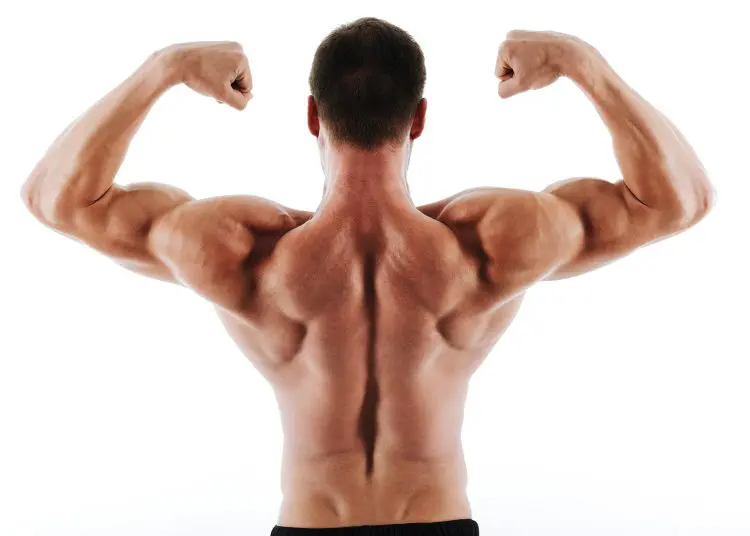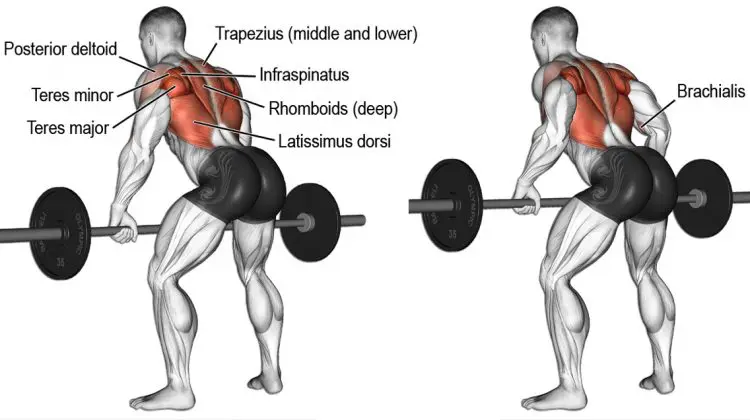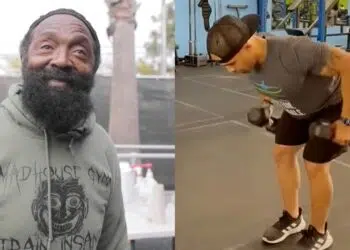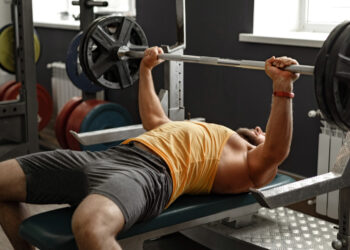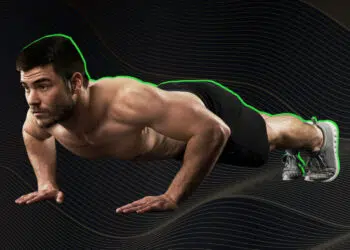Rumor has it that face pulls were invented by legendary strength coach Charles Poliquin. Whether that’s true or not, coach Poliquin certainly played a large part in popularizing this exercise, including them in many of his upper back workouts.
While a lot of people view face pulls as a watered-down rowing exercise, they’re actually a very potent posture and shoulder-health exercise. They target the muscles between and across your shoulder blades, as well as the back of your shoulders. You might not lift heavy weights when you do face pulls, but even with light to moderate weights and medium to high reps, this is a very effective exercise.
In this article, we reveal the muscles trained during face pulls and the ten best exercises you can do instead.
Face Pull Muscle Worked
Face pulls are a compound pulling exercise. But, unlike things like lat pulldowns and seated rows, face pulls do not involve your lats. Instead, face pulls target the muscles that retract your shoulder girdle. Specifically, face pulls work:
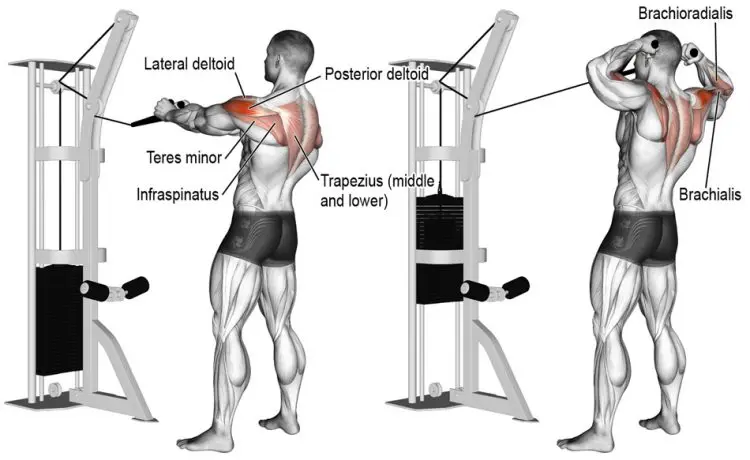
Middle fibers of trapezius – the trapezius is the large, diamond-shaped muscle of your upper back. There are three sets of fibers, the alignment of which dictates their function. The lower traps pull your shoulder girdle downward in a movement called depression. The upper fibers pull your shoulder girdle upward, which is a movement called elevation. The middle fibers pull your scapulae or shoulder blades back and together, which is called retraction.
Rhomboids – the rhomboids are located under your middle trapezius and between your scapulae. Like the mid-traps, they pull your shoulder blades back and together. There are two rhomboid muscles, rhomboid major and rhomboid minor, and both are involved in face pulls.
Level Up Your Fitness: Join our 💪 strong community in Fitness Volt Newsletter. Get daily inspiration, expert-backed workouts, nutrition tips, the latest in strength sports, and the support you need to reach your goals. Subscribe for free!
Posterior deltoids – there are three deltoid muscles: anterior (front), medial (side), and rear (posterior). The three deltoids work together to control your upper arm. The posterior deltoids are especially active during face pulls.
Biceps – as a compound pulling exercise, face pulls involve elbow flexion as well as horizontal shoulder extension and shoulder girdle retraction. As such, face pulls work your biceps in addition to the muscles of your upper back and rear shoulders.
Why Do These Muscles Matter?
The middle trapezius, rhomboids, and posterior deltoids play a crucial role in the function and stability of your shoulder girdle. Being able to hold your shoulders back and still during exercises like bench presses, deadlifts, and pull-ups makes these exercises safer and more effective. In addition, a strong, stable shoulder girdle may help reduce your risk of shoulder pain and joint injury.
Finally, hours of sitting hunched over your computer, too much chest training, and not enough pec stretching, and the irresistible pull of gravity means that many people have rounded shoulders and a hunched upper back. Face pulls, and their alternatives are the perfect antidote to poor upper body posture.
The 10 Best Face Pull Alternatives
As popular and effective as face pulls undeniably are, if that’s the only upper back exercise you do, you’ll soon get bored. Not only is this a psychological issue, but it could also impair your progress. Once your muscles get used to an exercise, it stops producing such good results.
The good news is that there are several different ways to train your mid-traps, rhomboids, and posterior deltoids that are just as effective as face pulls.
Here are ten of the best face pull alternatives!
1. Band pull-aparts
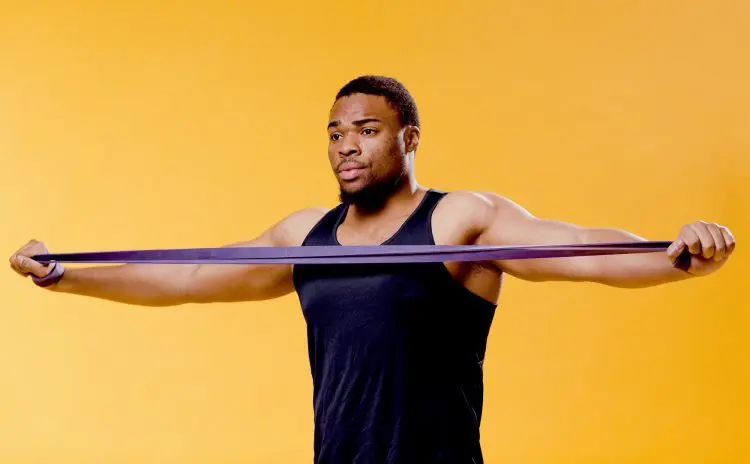
Band pull-aparts are one of the most convenient ways to train your rhomboids. All you need is a resistance band. You can do sets of band pull-aparts to break up long periods of sitting or between sets of bench presses or push-ups. Alternatively, they make a good warm-up and pre-hab exercise before any upper body workout.
How to do it:
- Hold a resistance band with an overhand, shoulder-width grip. Raise your arms in front of you so your hands are roughly level with your shoulders. Pull your shoulders down and back.
- Open your arms and stretch the band out across your chest.
- Return to the starting position and repeat.
- You can work your upper back from different angles by changing the angle of your arms and stretching the band diagonally across your chest and not just horizontally.
Related: Do The Band Pull-Apart For Better Posture and Performance.
2. Wide grip bent over rows
All horizontal rowing exercises involve your mid-traps, rhomboids, and posterior deltoids. That’s because, to do them, you must pull your shoulders back, providing your arms with a stable platform to work from. However, to maximize upper back recruitment, wide grip rows work best as they involve more scapular retraction than regular types of rows.
Level Up Your Fitness: Join our 💪 strong community in Fitness Volt Newsletter. Get daily inspiration, expert-backed workouts, nutrition tips, the latest in strength sports, and the support you need to reach your goals. Subscribe for free!
How to do it:
- Hold your barbell with a wider than shoulder-width overhand grip. Stand with your feet between shoulder and hip-width apart, knees slightly bent for balance.
- Hinging from the hips, lean forward until your torso is roughly parallel to the floor. Let your arms hang straight down from your shoulders. Pull your shoulders down and back and brace your abs. Do not let your lower back round.
- Bend your arms and pull the bar up and into your chest. Keep your elbows out and level with your shoulders.
- Extend your arms and repeat.
Related: Bent Over Rows – Benefits, Muscles Worked and Variations.
3. Wide grip seated cable rows
While bent over barbell rows are an excellent mid-trap, rear delt, and rhomboid exercise, they can be hard on your lower back. Seated cable rows are just as effective but much more lower back-friendly. You can do this exercise using a long, straight bar, but you may find it more comfortable with a parallel grip bar.
How to do it:
- Sit on the bench with your feet on the footrest. Your knees should be slightly bent. Grip the handle with a wider than shoulder-width overhand grip. Sit up tall and pull your shoulders down and back.
- Bend your arms and pull the bar into your chest. Keep your elbows up and roughly level with your shoulders.
- Extend your arms and repeat.
Read more: Wide-Grip Cable Row Exercise Guide and Videos.
4. Dumbbell reverse flys
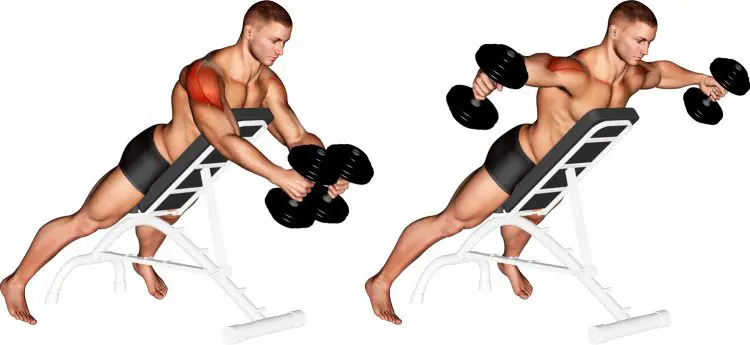
Most people think of reverse flys as a rear shoulder exercise. Still, it also works the middle fibers of the trapezius and posterior deltoids, making it a great alternative to cable face pulls. This is an excellent exercise for home lifters who may not have access to the adjustable cable machine needed to do face pulls.
Learn how to do dumbbell reverse flys here.
5. Cable reverse flys
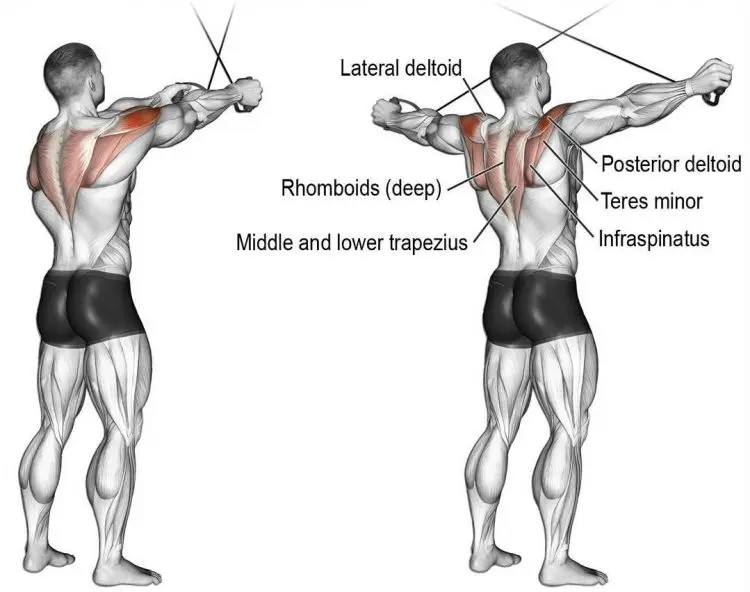
Dumbbell reverse flyes are a useful exercise, but they don’t keep your muscles under constant tension. Cables are potentially more effective because your muscles have to work through the whole range of motion.
How to do it:
- Stand between a cable crossover machine. Hold the left handle in your right hand and the right handle in your left hand. Extend your arms out in front of you, with your palms facing inward. Bend your arms and then keep them rigid. Pull your shoulders down and back.
- Open your arms until your hands are slightly behind your shoulders.
- Return to the starting position and repeat.
6. Wide grip inverted rows
Also known as Australian push-ups, this bodyweight exercise works your mid-traps, rhomboids, and posterior deltoids because, when using a wide grip, you extend your shoulders horizontally and squeeze your shoulders back and together. Emphasize your upper back by pulling your chest right up to the bar.
Check out this article to learn how to do inverted rows.
7. Bench shrugs
While this exercise doesn’t work your posterior deltoids as hard most face pull alternatives, it’s especially useful for hammering the mid-traps and rhomboids. Keeping your arms straight means you are free to focus exclusively on pulling your shoulders back, hitting your mid-traps and rhomboids harder than ever.
How to do it:
- Set an exercise bench to around 45 degrees. Lie face down on the bench with a dumbbell in each hand. Let your arms hang down from your shoulders. Turn your wrists so your hands are facing inward.
- Without bending your arms, shrug your shoulders back and together. Hold this contraction for 2-3 seconds.
- Lower the dumbbells back toward the floor and repeat.
- You can also do this exercise with a barbell and an overhand grip.
8. Hand-release push-ups
Yes, push-ups ARE a chest and triceps exercise, but this unique push-up variation also works your mid-traps, rhomboids, and posterior deltoids. Think of hand-release push-ups and the perfect self-balancing upper body workout!
How to do it:
- Kneel down and place your hands flat on the floor, slightly wider than shoulder-width apart. Your fingers should be pointing directly forward.
- Walk your feet back, making sure your body is straight and rigid; brace your core. Look straight down at the floor.
- Bend your arms and, under control, lower your chest to the floor. Keep your body tense and straight.
- Pull your shoulders down and back and lift your hands a few inches off the floor. Imagine you are doing a bent-over barbell row. Do not arch your lower back.
- Place your hands back on the floor and push yourself back up to return to the starting position. Extend your arms explosively to overcome inertia and increase muscle activation and power.
Find out more about this excellent exercise in our in-depth guide.
9. Band face pulls
No cable machine? No problem! You can also do face pulls using a resistance band. Just make sure your band is strong and securely anchored. A broken band or anchor point could cause serious injury.
How to do it:
- Attach a light to medium strength resistance band to a head-high anchor point. Hold one end of your band in each hand. With your arms extended in front of you, step back and into a staggered stance to tension the bend and create a stable platform.
- Keeping your elbows up, bend your arms and pull your hands back to your head as if you were trying to stick your thumbs in your ears.
- Extend your arms and repeat.
10. Supine Y-raise
While you won’t need a lot of weight to do this exercise, you’ll definitely feel it working your mid-traps, rhomboids, and posterior deltoids. It also works your lower traps. This exercise is best done using an incline bench, but you can also do it lying prone (face down) on the floor, but the range of motion is smaller.
How to do it:
- Set an exercise bench to around 45 degrees. Lie face down on the bench with a weight in each hand. Let your arms hang down from your shoulders. Turn your wrists so your hands are facing inward.
- Without bending your elbows, raise your arms forward and up to form a V-shape with your arms in line with your body. Point your thumbs up toward the ceiling.
- Lower your arms and repeat.
Face Pull Alternatives – Wrapping Up
If you want healthier, more stable shoulders and better posture, face pulls are hard to beat. But, do them often enough, and they’ll soon start to lose their potency. Keep your upper back workouts fresh and productive with the ten best face pull alternatives.
We’re not saying you need to quit face pulls for good. Just that, to avoid plateaus and workout stagnation, you should supplement them with some of these alternatives.
Whether you are new to face pulls or have been doing them since coach Poliquin made them so famous, use these variations to maintain your strength and muscle-building progress.
Interested in measuring your progress? Check out our strength standards for Bench Press, Dumbbell Reverse Fly, Push Ups, and more.

